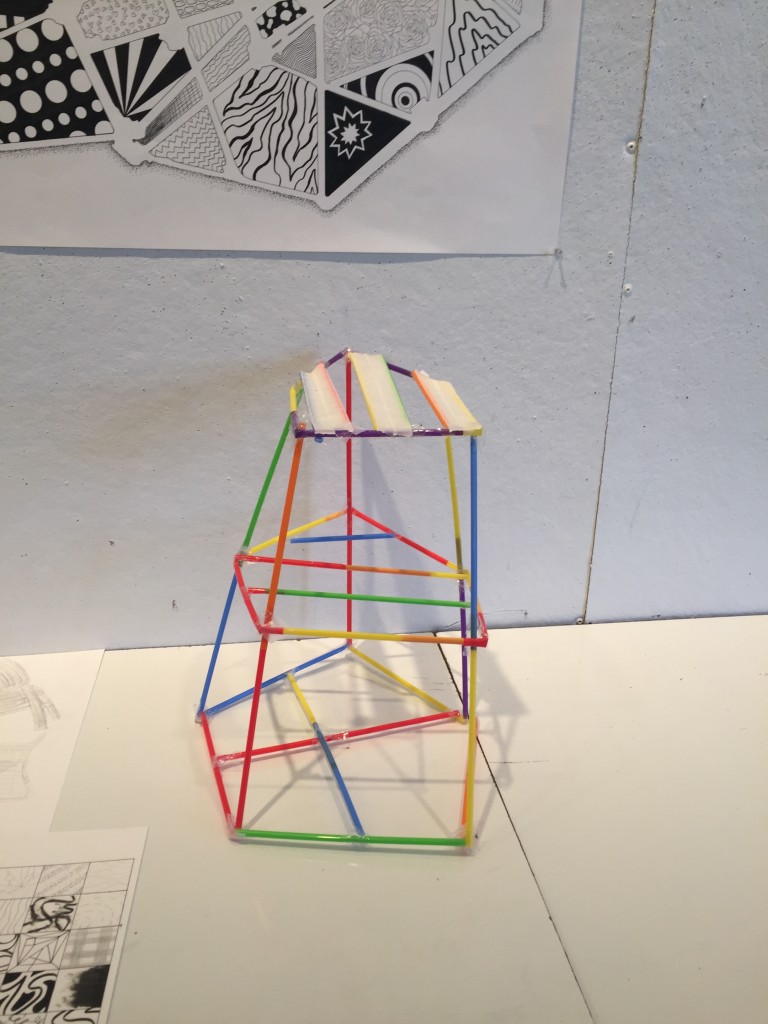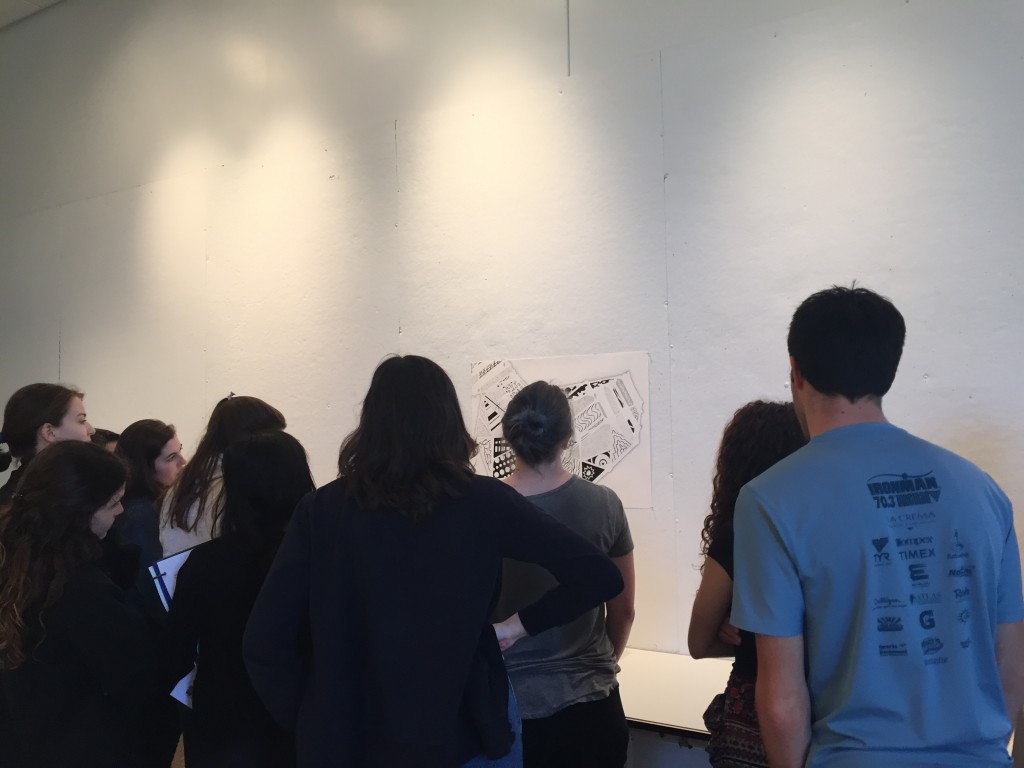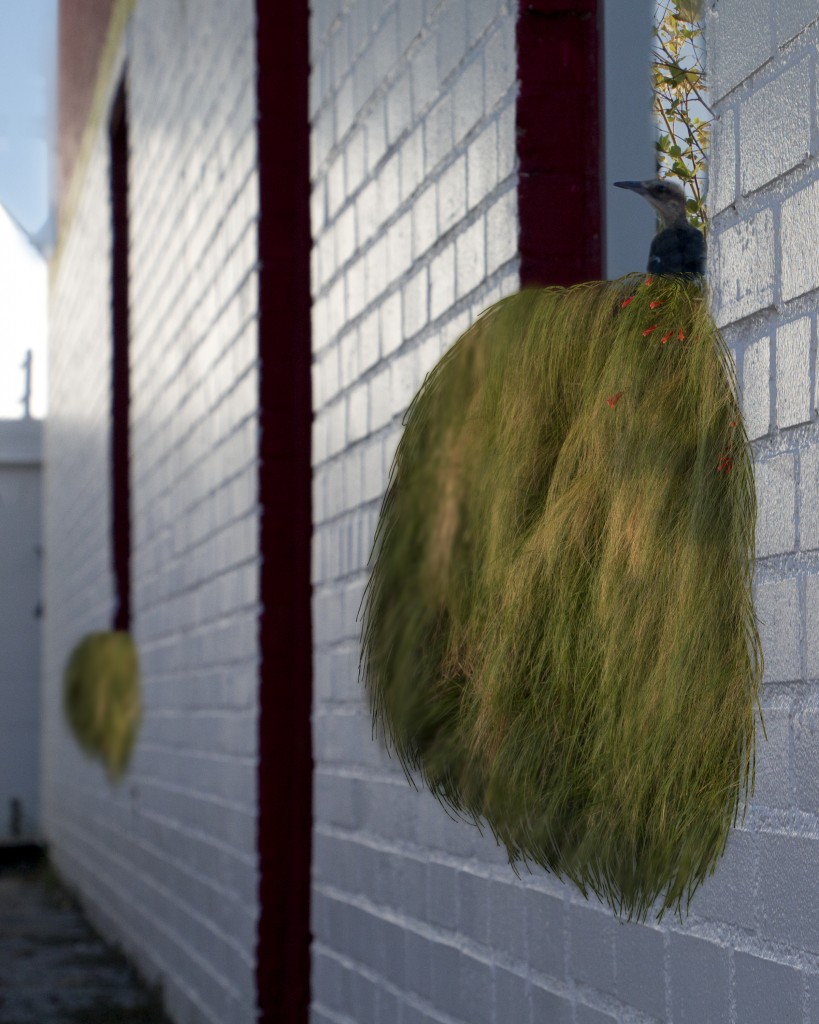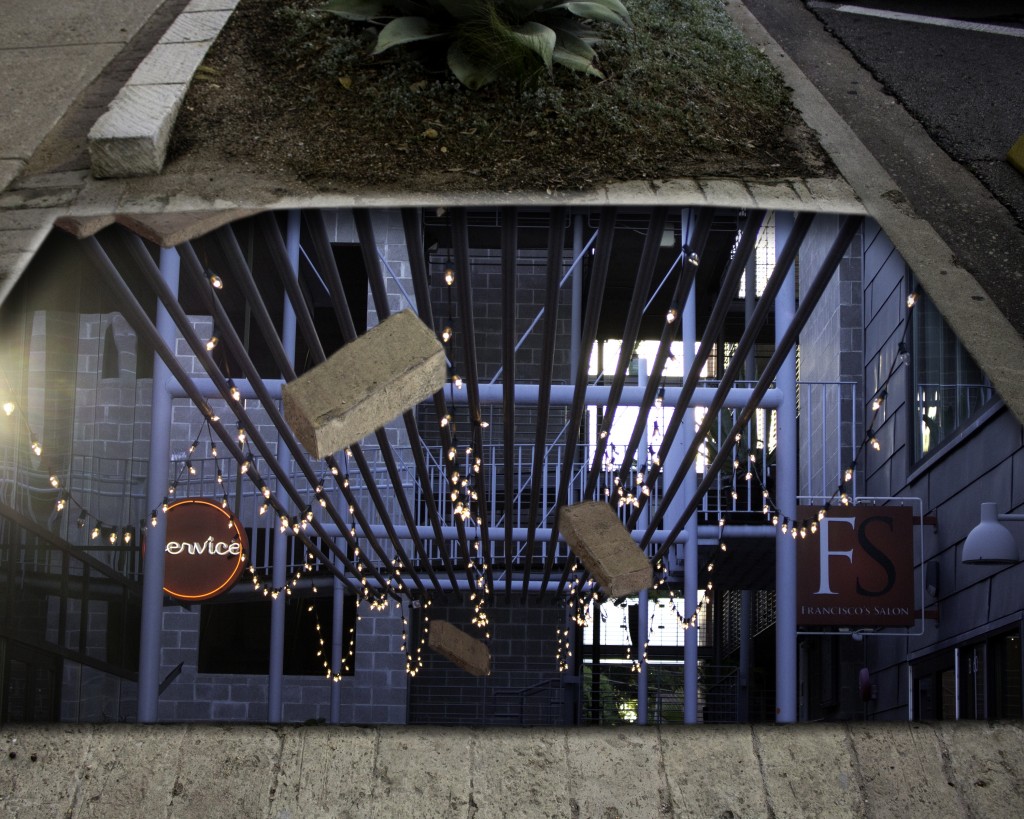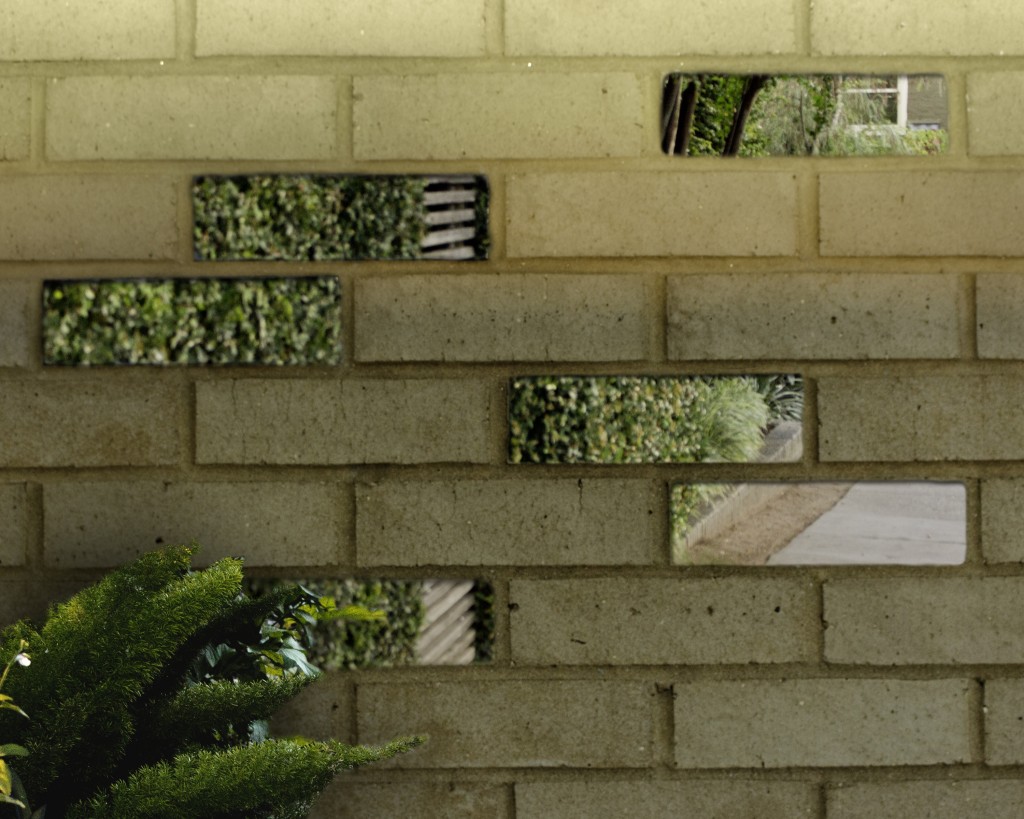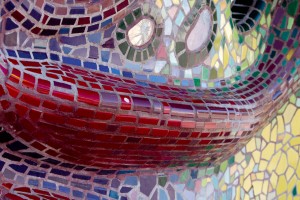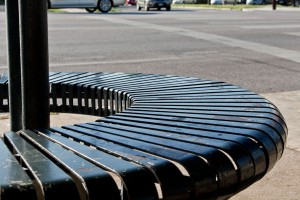ARTS1311 – Reading Responses
Reading | WTF is Design & Art anyway?
1. What is the purpose of a designer, do they always work for a stakeholder?
A designer’s purpose is to please consumers visually, to influence and induce the need for creative thinking while also making design (and, consequently, art) understandable for a wider audience. They need not always work for “stakeholders”, but this is the most common and comfortable setting of a designer because of a designer’s duty to please consumers (as stated above).
2. Is the artist always a self-expressive narcissist?
I wouldn’t be so quick to call them narcissistic, but they certainly have more freedom for self-expression in their products because artists have no obligation to any particular audience or consumer. While a designer primarily works for others, artists can create what pleases them individually, and it is more like good fortune that a “consumer” is interested in their work.
3. Can the designer/artist exist?
Well, I should like to think so. At the very least, there could be circumstances in which “true” art and “true” design may intermingle and are consumed as a blend of the two.
Personal Reflection
1. What is your personal view of the difference between the designer and the artist?
My difference of definition between these two is who their work is for; the consumer. As mentioned above, artists create work primarily for themselves whereas a designer always considers a client first.
2. Which are you, why?
I would say I’m a designer. I hardly create art of my own volition; I usually need an assignment or people who give me suggestions or options to work with.
ARTS1311 – Project 1 – Reflection
Overall, I felt that this project went well. The process was complex, but I think that helped when I reached the finished piece. I think that my piece strongly represents what I wanted it to, by juxtaposing shadows and light and reversing their definitions.
- Sketches/line inventories
- Sculpture
- Student review
- Final piece
VISU 1100: Blog Post #12
-Part 1-
Kim Garza- I really enjoyed Kim’s presentation because she, like the other graphic design presenters, have shown me that there is a vast range of careers for graphic designers, something that puts my mind at ease when I think about what it is that I really want to do with my degree. I liked how she showed us the process of her projects, specifically her collaboration process with the Eventurist app. I look forward to having her as a professor.
Tammie Rubin- My sister is currently interested in ceramics (although she prefers clay to plastic), but I thought it was very interesting to hear Tammie’s process of creating her work and the purpose behind each piece of hers. I like how her art comes from more abstract connotations of words such as “chimera” and “nature”, and how she thinks of her art as 3D collage more than simply a piece of functional pottery.
James Scheuren- I enjoyed looking at James’s photos. You could clearly see the thought behind the work, the meaning behind each piece. I liked his initial statement that photos were indexes of what had already been. I always find images more appealing when they are spontaneous instead of staged, so I liked how that was James’s focus when he took the photos of the things that had just happened because of human interaction with objects.
-Part 2-
Overall I enjoyed this class. You guys were all funny, but you also had serious, important points that I enjoyed listening to and I feel that they helped put my mind at ease and made me feel more secure that my major, graphic design, really is what I want to be doing. If I had to give any critical feedback, I think the only feedback I could give is for Bill to not get sick again?? Haha.
VISU 1311_Project #2 Reflection_Loren Gamez
Overall, I disliked the collage project because it’s simply something that I don’t think enough about. I don’t have the “abstract” mind that I feel is required for a successful collage. Thus, I went with what I knew, and that was a digital collage that had the feel of being its own image (something “magazine worthy” instead of “fine art worthy”, as was said during the critique).
I admired how abstract or well planned other collages looked, and it made me curious as to what their thought processes were for creating it. Instead of “thinking outside the box”, I confined myself to what I knew, and I think that was reflected in my collages. For me, I played it safe because I grew stubborn with physically cutting apart images that I was tired of anyway.
After hearing the critiques, I don’t think I really would have done anything differently. I don’t feel as though I would have been satisfied with any of the physical collages that I might have tried to do, so I still would have gone the digital route.
VISU 1100: Blog Post #11
-Part 1-
Tuan: I enjoyed Tuan’s presentation, because some of the things he has done are similar to what I have done; specifically the use of his designs for “gift” art for family and friends. Several times my family members or close friends have approached me and asked me to conceptualy design a poster or a t-shirt for them. Only a handful of these have actually been put to use, but at least they serve as practice.
Hollis: I liked Hollis’ use of artwork to depict memories. Since my maternal grandfather’s passing and my maternal grandmother was diagnosed with Alzheimer’s, I’ve become more and more fascinated with memory and our emotional relationships to them, especially the polar opposites that are joy and grief. Having personally experienced these, and watched my mother experience them for her parents, there’s always a part of me nagging to express my comment on these emotions through my artwork.
Bill: I liked how Bill described the “pathway” of his career, and how there were high points and low points. I think about this often, and wonder what my own career will look like in future years with high points and low points of my own.
-Part 2-
Year 1: Find a long-term internship position that hopefully turns into a paid full-time job.
Year 2: Continue the internship or full-time job.
Year 3: Have a full-time job as a graphic designer, hopefully for advertising or book-cover design.
Year 4: Promotion within job, or seek a new job with higher pay?
Year 5: Have a high paying career as a professional designer. Preferably for book-cover or advertising.
My long term goal, as far as having a degree from college is concerned, is to have a long-term job that I love and where I can do what I love. In order to do this, I will have to be able to be flexible with my skills and improve them in any way that I can in order to “polish my resume” and be noticed for my work and what I am capable of as a prospective designer.
VISU 1311: Creativity Blog Post #12
I found the video, The Way Things Go, to be very surprising in how well it was able to hold up for such a long time. Each action has a consequence on the next action, and yet they are all connected so well, and the precision and timing of each action that occurs is nearly flawless.
The chain reaction that is caused from the precise relationship of each object to the next is something that must have taken a very long time to perfect. Several variables must have gone into play, and they all had to connect in a way that could keep the chain going.
I especially liked how liquid chemicals and fire played such a large role in this. The one constant that seemed to recur throughout the reaction was that liquids could be counted on to go in a very specific direction and to carry a specific weight. As more liquid collided with the next object in the reaction, the pressure is what allowed the chain reaction to continue.
Gravity, though, probably had the largest role to play. Each action was connected through gravity, because each object’s weight could be counted on to have the same relationship to gravity over and over again, and this was critical to the entire chain reaction so that both cause and effect could take place.
VISU 1311: Creativity Blog Post #11
Listening to David Blaine was stressful to me. I can’t imagine putting myself in the situations that he has been in. I kept asking myself how he could continue to do things like he did when most of his attempts were nearly fatal.
However, on a less perilous note, I can understand where he is coming from. The overarching themes of his presentation were sustainability and practice. To get to the point of holding his breath for 17 minutes, Blaine had to teach his mind and body to sustain his life for an extended period of time. Not only that, but to do so, he had to practice keeping his heart rate steady in a stressful environment.
Sustainability can go for pretty much anything. In my drawing class we have discussed how to sustain a drawing and an idea, and the same can be applied to projects in Visual Studies as well. Practicing sustainability is of course the easiest way to get there, to keep trying to reach that point where you know something has succeeded, or is finished.
VISU 1311: Creativity Blog Post #10
I found this podcast to be very weird, but the topics discussed in the podcast are things that I’ve sometimes thought about, as well. Maybe I’ve watched a few too many episodes of The Big Bang Theory or Doctor Who, but I have always found the concept of time to be interesting. Likewise, I thought that several of the points of the podcast were also interesting.
I liked the idea that humanity is so fascinated with time because we have a strong desire to transcend it. Humanity is fascinated with the idea of time and with the idea of sustainability. Not only do we as people want to be sustainable, but we want our belongings, our material possessions, to come with us. Anything we become attached to becomes a burden to let go of.
Additionally, another major point that caught my attention was that time hates, destroys, and outlives (if it can be considered to have a life) anything that humans might create. I mean, this is fairly obvious if you look at anything that is worn or antique. The most prominent things that have been destroyed by time are architectural structures, like buildings. There are ruins all over the world leftover from early civilizations, and their evolution from what they used to be at their creation is not yet over. I remember finding an image a long time ago of a “graveyard” of cars in Belgium that were left behind when the world broke out into World War II (Chatillon car graveyard).
VISU 1100: Blog Post #10
Below are the two most recent works I’ve done; assignments for my Visual Studies 1311 class.
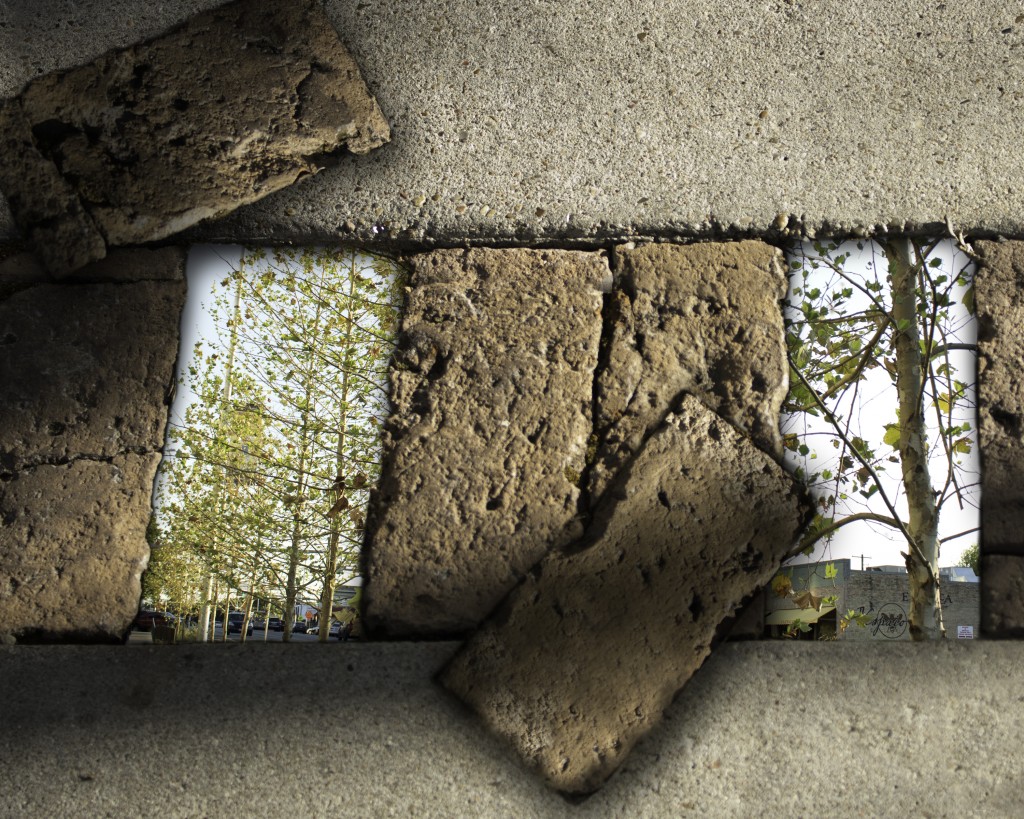
©2015, Loren Gamez
Harmony 1 of 5
Digital collage, 10″ x 8″
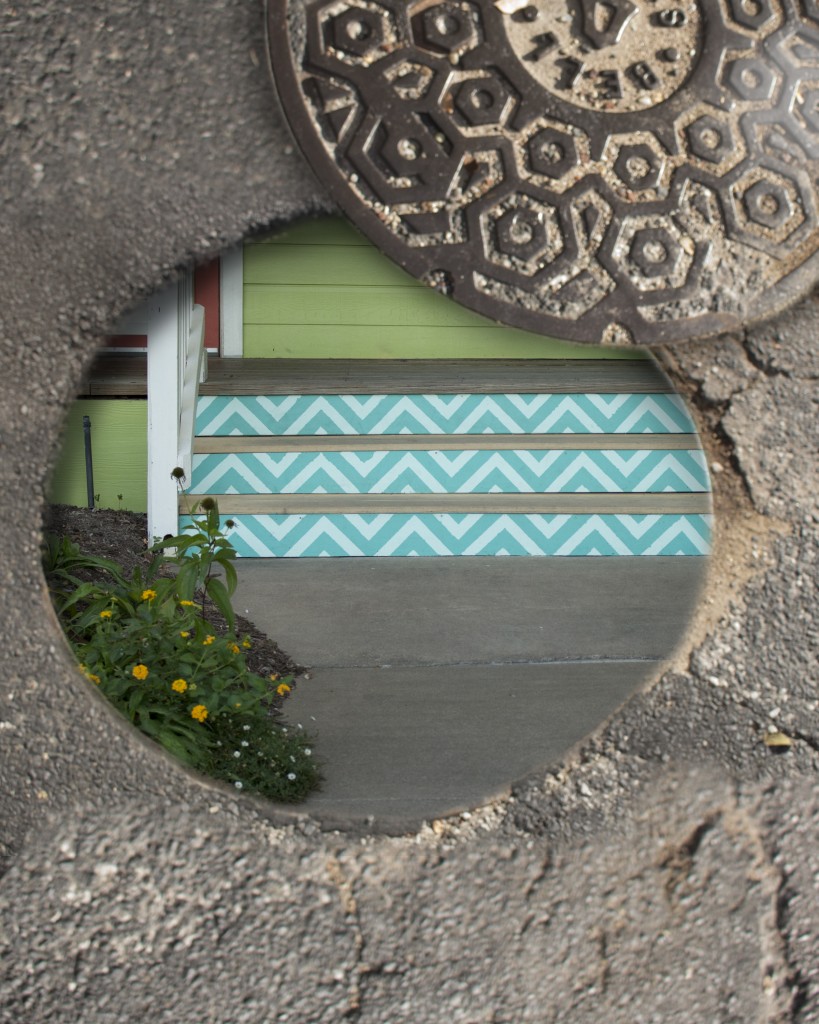
©2015, Loren Gamez
Harmony 2 of 5
Digital collage, 8″ x 10″
These two images are part of a collection of five digital collages that I created for the second project, “Harmony”, in my other Visual Studies class. Out of the five collages I did, I think I liked these the most because of the overall effect they had. My theme for the project was “portals”, and I felt that these two images conveyed that idea the best. Below are links to the other collage images and their descriptions:
-Collage 3
-Collage 4
-Collage 5
VISU 1311 Project #2 Collage 5: Loren Gamez
Last of the five final collages that I created for this project, and this one played around with the idea of being on the inside of one of the portals. However, it can also be seen as though objects from the portal (in this instance, a window) are extending their reach across both destinations. One might look at the collage and see a bird that has flown into the portal and this is where it ended up, or this may look like the end of a journey back from the mysterious portal destination. I also liked matching the blurriness of the plant on the left to the original blurriness of the larger brick wall to give it a more seamless feel, as though the plant was there originally, even though it wasn’t.
VISU 1311 Project #2 Collage 4: Loren Gamez
Fourth of my five collages, this was actually the first collage that I began working on when I was playing around with my idea of “portals”. In this one, I like how the various sizes of the bricks creates a movement as if the portal had just opened and the bricks are falling inside. This collage was fun because I actually created the bricks out of various paving stones that I had cut out from the original image, and transformed them to make 3 sides of each brick visible instead of the top.
VISU 1311 Project #2 Collage 3: Loren Gamez
This was the third out of my digital collages that I was considering to use as the final collages. This collage, rather than a “portal” that leads to a different area, this collage acts as a more literal barrier between one setting and the next and creates a sense of transparency in a brick wall that we normally perceive as always being solid.
VISU 1311 Project #2 Collage 2: Loren Gamez
My second collage, and one of the two final collages that I used for my critique, this image also focuses on a portal, but has a different destination. In this collage, a sewer entry that one might pass by and ignore every day was turned into a “doorway” that might lead to a home.
VISU 1311 Project #2 Collage 1: Loren Gamez
This is my first collage, and one of the two final collages that I used for my critique. For my collages, I was interested in the idea of “portals”; a hidden place that could be hidden in plain sight in a mundane location like as a busy street such as South Congress. In this particular collage, the pavements on a walkway are the hidden site of a portal that leads to another part of the city.
VISU 1311: Creativity Blog Post #9
I really enjoyed the film Memento. It was both confusing and captivating. The use of a split, reverse relation of time within the film’s storyline (half of the scenes leading up to the ending from the beginning, and half of them receding from the ending to the beginning) helps the viewers to see things through the main character’s point of view, as if they also only had an ability of seeing scenes in a short time period before things changed. It adds a sense of mystery that keeps the viewer interested until the resolution, or at least it did for me.
Additionally, the choice that was made in regard to the sequence of which scenes would go first was an interesting one that is unlike pretty much any other film I’ve seen. While it is split/reversed, the scenes don’t feel “choppy”, and viewers don’t really feel as though they’re missing anything. Instead, I felt as if I were putting together the same puzzle that the main character was putting together. There was an interactive feeling to the film which was unique and intriguing.
Lastly, the narrative of the film was also unique, as was the way it impacted the story overall. The main character was telling the story from two different time periods, although his reflection of events in the black/white scenes seemed to be the dominant story-telling method.
Not to be cliche, but I think I would definitely watch this film again, or have my friends watch it. As confusing as the story line can be to follow, and as frustrating as the main character’s struggling is to witness, the way that the film was constructed was really what captivated me and kept me watching it.
VISU 1100: Blog Post #9
-Part 1-
Lynne: I enjoyed Lynne’s presentation of her photography, and I liked her point that it is important to figure out how to make your work in your everyday life. I liked how true this was, because we can’t be college students with free time for the rest of our lives, so its important to get into the habit of finding ways to work while you’re busy and how to balance your work life with your art life.
Miranda: I loved Miranda’s “diagram” kind of outlook on graphic design careers. As a graphic design major, I thought it was extremely helpful, and she helped to answer some of the questions I’d been having as far as what kind of career I might pick up with my major.
Dustin: I loved Dustin’s photography, and his powerpoint with diagrams of lighting was also very helpful as a visual. His insight on wedding photography, and photography careers in general, was very interesting to hear. I like his idea of word of mouth referrals and its something I could see myself using.
-Part 2-
Internship #1: http://www.internships.com/graphic-design/Graphic-Designer-I9989357
Internship #2: http://hire.jobvite.com/CompanyJobs/Careers.aspx?k=Job&c=q419VfwT&j=oNOY1fwk&s=Indeed
Internship #3: http://www.glassdoor.com/job-listing/graphic-design-intern-sage-environmental-holdings-JV_IC1139761_KO0,21_KE22,49.htm?jl=1566535808
VISU 1100: Blog Post #8
It might be nerdy, yes, but as the Tenth Doctor once remarked: “People assume that time is a strict progression of cause to effect, but actually from a non-linear, non-subjective viewpoint, it’s more like a big ball of wibbly wobbly…timey wimey…stuff.” Sure, that was a statement in a work of fiction, but perhaps the Doctor (or the writers of the show??) were on to something. To the Vietnamese language, time doesn’t really exist at all. There are no verb conjugations for time the way there are in languages like Spanish, or Russian. Instead, time is only gleaned from context of the conversation.
It was this idea that sparked Father Martin Nguyen’s interest in his latest art exhibit, Drawing/Painting TIME (using portraits). Father Nguyen is an associate professor at the University of Notre Dame, but also an artist. He has a few exhibits in Indiana, California, and now he has a temporary exhibit here at St. Edward’s. I stopped by this exhibit this morning after my first visual studies class, and was simply astonished by the amount of portraits that Nguyen had completed for the exhibit. There were many faces, hundreds, and each one was strikingly unique, as people are. Every shade of skin was highlighted throughout the exhibit, and every color of hair (or lack thereof, in some cases). Additionally, some of the portraits were completed in grayscale. There was also a related set of images that were all depicting a single young girl over the course of a year; there were exactly 365 portraits of this girl.
I think the thing that stood out the most when I saw these pieces was the uniqueness. Unlike the precise, identical nature of machine works, you could truly see Nguyen’s work as an individualized piece, and if you get close enough, you can see the thoughtful brushstrokes. I think it made it more real, in a way. I think the natural shape of each portrait’s facial structure is common, but only in a way that it is used to guide your eye around the whole face and separate each one from another. They are all related because of their “snapshot” sense of time, and yet each is unique because of the person that they represent. The variety of each portrait depends primarily on genetics, through skin tone and the color of each person’s hair. However, to me this wasn’t at all distracting. As I stated before, it makes the portraits, and exhibit, seem more real. The grid-like rhythm of the portraits’ spacing between one and the next is consistent, and adds to the overall balance of the exhibit as a whole.
While the title of the exhibit alludes to a study of the progression of time, I think it is more than that beneath the surface. It’s about people. I am an introvert, and I’d rather be alone than in a crowded room socializing with people. But that doesn’t mean that I don’t appreciate each person individually. In some ways, I feel that this exhibit is similar. Nguyen has focused on each portrait individually; they have each had their own “fifteen minutes of fame” (although I’m sure it took much longer to paint each portrait). But together, the effect is quite different and yet also admirable. As for the portraits of the single young girl, I found them intriguing because I also found them comical. In my mind, I was creating a story from the young girl’s point of view and from her expressions in each of the images. I can only imagine that she would have become very bored or annoyed to have her portrait drawn over and over again, at least once a day (or at the very least, having her picture taken every day). I feel as though I would have had similar expressions to the ones that the young girl had if I were the subject of such a lengthy process of working. Similarly, every single image that Nguyen created has a different expression. Some faces are even turned to the side, or hidden completely. It fascinates me at the vast range of expression that we as humans are capable of, and I admired the way that Nguyen was able to capture so many.
Initially, I honestly did not think that I would be so drawn to Nguyen’s artwork. My first impression was it’s just a bunch of portraits over time. What’s the big deal? Now, though, I look back on that impression as laughable. I think that going to the exhibit in person allowed me to open my mind and really admire the work. And of course, I realized that there’s no way that I would probably have the patience to do something like Nguyen, and definitely not with the skill that he had. While I might not hang one of these portraits in my home, I don’t think that that was Nguyen’s purpose, and it doesn’t cause me to like the work any less. As stated before, I personally admire Father Nguyen’s exhibit primarily because of its element of uniqueness and personalization. Additionally, I like the parallel that while you can see the subjects’ passage of time, especially with the pencil portraits of the one young girl, you can also see the dedication of time that Nguyen himself had (and the patience) to make his artwork possible in the first place.
Word count: 897
VISU 1100: Blog Post #7
I enjoyed Nick’s presentation because I was able to see where my college education can take me, and that my college education and personal experiences can turn into a great endeavor. It got me thinking about the different ways I can use my graphic design major, such as packaging design.
I enjoyed Rebecca’s presentation because of her emphasis on internships and to keep trying. I agree that it’s important to be able to use internships to explore your options and see what you do and don’t like, and I can’t wait to get started with doing that myself.
I enjoyed Alex’s presentation because what he does is perhaps the closest to what I want to do with my degree; independent graphic design work. I liked his comment on using what designs are selling well on the shelves, and to use that knowledge to influence your own work so that it can be ahead because of its recognizable appearance.
I enjoyed Taylor’s presentation because, like Rebecca, she stressed that internships (and volunteer opportunities for that matter) are essential for experience. I also look forward to opportunities to study abroad.
I feel like I most related to Alex, because I agree that knowing what is already doing well in the markets helps with design choices for future things, and that a graphic designer should be versatile in their style. I don’t know who I was most surprised by…maybe Nick, because while his career doesn’t relate directly to his degree, it still influenced what he did. I think the most valuable piece of advice I heard was Taylor’s advice to take accounting/business related classes as something to fall back on if it becomes necessary.
VISU 1311_Project #1 Reflection_Loren Gamez
After hearing the critiques from all of the projects, there are three major things that I feel that I could have done differently for a stronger collection of images, in addition to smaller composition changes.
1) Visit South Congress more times. While I visited South Congress three times, I don’t feel that it was enough. I don’t think that I let myself really explore all of the little niches. As a naturally shy person, I think I just felt awkward taking pictures in a very public place; I’d much rather take the pictures at home or along a secluded nature trail. The hustle of the city just doesn’t interest me as much for photography.
2) Selected more images in my composition. I think I just felt very overwhelmed by the project and trying to relate my images to the Gestalt principles that I didn’t give myself enough time to enjoy the task of taking the pictures, and thus I felt limited in the images I could choose from in the final selection.
3) Take pictures as interesting subjects rather than subjects composed of Gestalt. I think I limited myself in general by trying to force the Gestalt principles onto my images, and I let that dominate what I saw through the camera. I didn’t take pictures for the sake of them having an interesting composition.
Additionally, the technical presentation of my images wasn’t the way that I had wanted it to be. Ideally, the images would have been seen horizontally, so that the viewers could see the continuity that united the images, instead of them being viewed vertically. I suppose my shy personality came into play here because I didn’t ask anybody if they knew of a way to make this possible in the blog. The image composition has been changed below to better reflect the continuity of the curve.
VISU 1100: Blog Post #6
For each class ask yourself the following:
VISU 1311
- My greatest strengths in this course include: Following directions and taking notes
- For greater success in this course, I need to: Open myself to be more “creative” and loose with my blog posts/assignment interpretations
VISU 1100
- My greatest strengths in this course include: Finishing blog posts early and listening attentively to class discussions
- For greater success in this course, I need to: Take more notes, maybe
FSTY (R&C)
- My greatest strengths in this course include: Taking notes and getting essays done (mostly) on time; making sure that my essays are “professional” and free of errors.
- For greater success in this course, I need to: Procrastinate less and get eassays done earlier
FSTY (60s)
- My greatest strengths in this course include: Taking good notes, attending required films, and reading required readings
- For greater success in this course, I need to: Study more for test material
ARTS 1316
- My greatest strengths in this course include: Drawing straight lines and making shapes proportional
- For greater success in this course, I need to: Work on darker line quality
Computer skills:
- My computer skills include: Advanced in Photoshop and Illustrator, as well as most Microsoft Office programs
- I still need to learn: Become more familiar with Mac/Apple computers/programs; I prefer PC/Microsoft
Research & writing skills:
- My greatest strengths as a researcher/writer include: Being able to write sufficiently and professionally about my topic
- I need to work on these aspects of research and writing: More thorough research; finding solid research sources
- I learn best & accomplish most when: I know more about my research topic, when I have a quiet room to brainstorm/write in
Action Plan
In my VISU 1311 class, I can improve my performance by:
1) Being more creative
2) Giving myself project guidelines
3) Set deadlines
4) Don’t procrastinate
5) Think outside the box
6) Go outside comfort zone
7) Be open to new ideas
8) Use a sketchbook to brainstorm project ideas
9) Spend more time on composing a project
10) Buy a digital camera so that I don’t limit the images I can get

